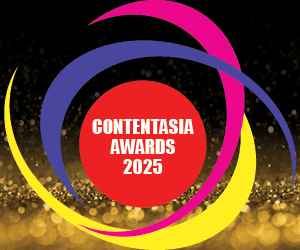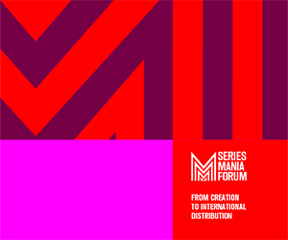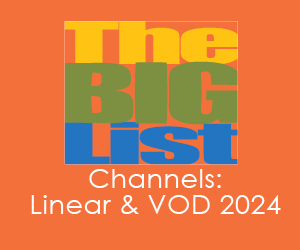The inevitable question we’re being asked and are asking ourselves on the eve of the 10th edition of the ContentAsia Summit is: How has the content industry’s conversation changed?
The easiest answer is to say in more ways than we could have imagined (true, of course, and then burble on about digital, on-demand, SVOD, AVOD, customer experience, all of which is real and relevant), in good and not so good ways (true as always; which decade in history has experienced no range of change), and in some senses not at all (also true. Think of all the rubbish still being spewed in Asia about the value of original content until the time comes to sign the cheque).
Seriously, though, how – specifically – has the conversation changed since our first event in 2009? I found a much more entertaining/detailed answer in back issues of the ContentAsia Summit programmes.
Our agenda in year #1 ranged from a conversation about the challenges of linear scheduling – a skill being “challenged in a way never before experienced in television history” – to a session on how to harness online opportunities to add to your existing business, and what social networks mean to you and to your audience. Clearly we were onto something.
The year #2 programme was an OMG moment, not only because the welcome note is in 7pt type and I can’t read it anymore without a magnifying glass. Excerpt: “We’re facing massively exciting and hugely challenging times. For every device invented, every piece of software created, every innovation that promises unprecedented access, ease and connectivity, there are myriad rights, licensing and next-generation issues that need to be identified and integrated into our daily businesses”. Who would have thought then that the problem was so complex the industry would still be trying to sort it out?
And then there’s this, also from 2010: “The good news is that viewing figures are higher than they have ever been, with linear supported by catch-up, on-dem...
The inevitable question we’re being asked and are asking ourselves on the eve of the 10th edition of the ContentAsia Summit is: How has the content industry’s conversation changed?
The easiest answer is to say in more ways than we could have imagined (true, of course, and then burble on about digital, on-demand, SVOD, AVOD, customer experience, all of which is real and relevant), in good and not so good ways (true as always; which decade in history has experienced no range of change), and in some senses not at all (also true. Think of all the rubbish still being spewed in Asia about the value of original content until the time comes to sign the cheque).
Seriously, though, how – specifically – has the conversation changed since our first event in 2009? I found a much more entertaining/detailed answer in back issues of the ContentAsia Summit programmes.
Our agenda in year #1 ranged from a conversation about the challenges of linear scheduling – a skill being “challenged in a way never before experienced in television history” – to a session on how to harness online opportunities to add to your existing business, and what social networks mean to you and to your audience. Clearly we were onto something.
The year #2 programme was an OMG moment, not only because the welcome note is in 7pt type and I can’t read it anymore without a magnifying glass. Excerpt: “We’re facing massively exciting and hugely challenging times. For every device invented, every piece of software created, every innovation that promises unprecedented access, ease and connectivity, there are myriad rights, licensing and next-generation issues that need to be identified and integrated into our daily businesses”. Who would have thought then that the problem was so complex the industry would still be trying to sort it out?
And then there’s this, also from 2010: “The good news is that viewing figures are higher than they have ever been, with linear supported by catch-up, on-demand mobile and onllne. If business models aren’t quite there yet, there is more confidence today than there has been before that $$ will follow demand”. Uh-huh. Fast forward eight years, and – albeit older, wiser and more battered – we’re on the same conversation track, even if we’ve moved from “where’s the money?” to “is there any money here?” mode. That answer still to come...
In 2011, we celebrated innovation and creativity, with a “big, bold & back in action” theme that looked at transformation and floated the idea that the next big thing was the same as the last big thing – great content. 2012 was the year of “all screens bright & beautiful”. In 2013, we talked about doing the same things in different ways. The following year, the agenda was all about “great stories, well told”, where we highlighted the power of stories as a bulwark against major commercial challenges. 2015 was all about “unboxing” the new video proposition, drawing from the online craze and recognising that unwrapping new video products could be – should be – more exciting than the latest iPhone. “Our Big Fat Engagement Party” followed in 2016, putting customer engagement at the centre of the conversation. And so we come to 2017, when the conversation was guided by deep breathing and a suggestion to “keep calm and stream on”.
Somewhere in between, 100s of OTT/streaming platforms rose up, traditional pay-TV platforms picked their paths for better or worse, global format rights owners reworked their Asia strategies, the conversation around multi-platform challenges became more sophisticated and Asian originals started taking up much much more headspace and screen time.
One thing hasn’t had to change at all through the years though. From year one, our Summit agenda was designed to explore content issues of the moment from every angle and to provide the best possible environment to talk about the things that matter most. I said it exactly like that then and I’ll say it again now. No changes.
Published on ContentAsia Issue Four 2018, 24 August 2018




















